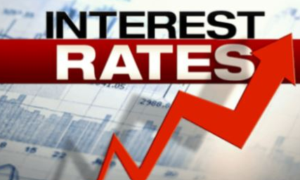Introduction:
As the global economy continues to evolve, one of the most critical factors that shape financial markets and business decisions is interest rates. The direction and level of interest rates have significant implications for borrowing costs, investments, and economic growth. In this article, we will explore the future of interest rates from a dovish perspective, highlighting the potential benefits and implications of a more accommodative monetary policy. Drawing insights from economist Kavan Choksi, we will delve into the rationale behind a dovish stance and its potential impact on various sectors of the economy.
The future trajectory of interest rates continues to capture the attention of economists, investors, and financial analysts worldwide. In this article, we will explore a dovish perspective on interest rates, envisioning a scenario where rates are likely to remain low or even decrease in the coming years. Despite the prevailing low interest rate environment, various factors suggest a continuation of accommodative monetary policy. Here is a guide from Kavan Choksi.
Persistent Economic Uncertainty
One key driver of a dovish outlook on interest rates is the persistence of economic uncertainty. Global economies face ongoing challenges, including geopolitical tensions, trade disputes, and structural issues. These uncertainties can hinder economic growth and may prompt central banks to maintain low interest rates as a means of supporting borrowing, spending, and investment.
Central Bank Commitment to Stimulative Measures
Central banks, in their efforts to support economic recovery, often express a commitment to stimulative measures. By keeping interest rates low, central banks encourage borrowing and investment, thus boosting economic activity. A dovish stance on interest rates reflects the central bank’s desire to maintain accommodative monetary policy to support economic growth and mitigate the risks associated with a fragile recovery.
Inflation Moderation and Below-target Rates
Another factor supporting a dovish view on interest rates is the moderation of inflation and below-target rates. Inflationary pressures have remained subdued in many economies, prompting central banks to adopt a cautious approach to interest rate increases. Central banks often emphasize the importance of achieving their inflation targets and may opt to keep interest rates low until sustained and significant inflationary pressures materialize.
Global Monetary Policy Coordination
Global monetary policy coordination is a significant factor that influences the future of interest rates. Central banks across different economies often communicate and coordinate their monetary policy decisions to avoid disruptions and maintain stability. In a dovish scenario, central banks may collaborate to ensure that interest rates remain low globally, as a synchronized approach helps to manage currency exchange rates and mitigate the risks of divergent monetary policies.
A dovish perspective on the future of interest rates suggests that rates are likely to remain low or decrease further in the coming years. Factors such as persistent economic uncertainty, central bank commitment to stimulative measures, inflation moderation, and global monetary policy coordination contribute to this outlook. However, it is crucial to acknowledge that economic conditions can change, and interest rate projections are subject to revisions based on evolving circumstances. Staying informed about economic developments and central bank policies will be essential for individuals, investors, and businesses to navigate the ever-changing interest rate landscape.



































